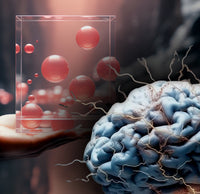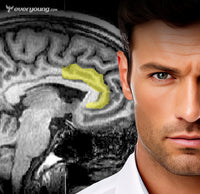4. Social media addiction
Next, let's explore the intricacies of how social media platforms exploit the same neural circuits in the brain implicated in substance addiction, such as those seen with heroin and cocaine use. At the Everyoung.com Research Centre, we have explored these mechanics extensively and reached a good understanding of the brain's reward system and how both substances and behaviors, including the use of social media, can co-opt it.
The Foundation: Brain's Reward System
At the heart of addiction—whether substance-related or behavioral—is the brain's reward system, primarily the mesolimbic dopamine system, which includes the ventral tegmental area (VTA) and the nucleus accumbens. Activation of this system releases dopamine, creating feelings of pleasure and reinforcing the behaviors leading to this activation. It has been explained clearly from the scientific aspect how addictive drugs artificially stimulate this pathway, reinforcing drug-taking behavior by increasing dopamine levels, often more rapidly and to a greater extent than natural rewards.
Social Media: A Behavioral Addiction
Social media, while not a chemical substance, can become addictive through mechanisms similar to drug addiction. This behavioral addiction capitalizes on the brain's tendency to repeat actions that lead to dopamine release in the reward pathway.
Intermittent Reinforcement. Social media platforms are designed to exploit the principle of intermittent reinforcement - rewards that are given at random intervals. This is similar to gambling and creates a powerful and compulsive engagement loop. Each scroll, like, or new post can be seen as pulling the lever on a slot machine, providing unpredictable rewards for likes, comments, or new content. This unpredictability is crucial to its addictive potential, as it keeps the brain in a state of anticipation, continually seeking the next reward.
Social Reward. Humans are inherently social creatures, and social interactions can activate the reward system. Social media platforms provide social rewards (likes, shares, comments) that trigger dopamine release (especially if one relates the interaction to one's personality), reinforcing the use of these platforms. Over time, the pursuit of these social rewards can become compulsive, mirroring the craving for drugs in substance addiction.
Normalization and sensitization. Just as with drug addiction, where repeated exposure to a drug leads to tolerance (requiring more of the drug to achieve the same effect) and sensitization (increased responsiveness to the drug), heavy social media use can alter the brain's reward system. Users may spend increasing amounts of time on social media to achieve the same level of satisfaction. They may become more sensitive to social rewards or punishments on these platforms.
Neuroplastic Changes. Repeated drug use leads to neuroplastic changes in the brain, rewiring the brain's reward circuitry to prioritize drug-related cues and activities over natural rewards. Similarly, heavy social media use can lead to neuroplastic changes prioritizing social media engagement. These changes can make abstaining from social media use difficult, as the brain has been conditioned to seek out the digital rewards it offers.
In conclusion, social media platforms, through their design and the nature of the rewards they offer, can become addictive by hijacking the same neural circuits that are exploited by addictive drugs. The intermittent, unpredictable nature of these rewards, combined with the intrinsic value we place on social interaction, creates a potent recipe for addiction. At the Everyoung.com Research Centre, we believe that understanding these parallels not only illuminates the addictive potential of social media but also underscores the importance of developing strategies to mitigate its impact on mental health and well-being.
Readers suggest







